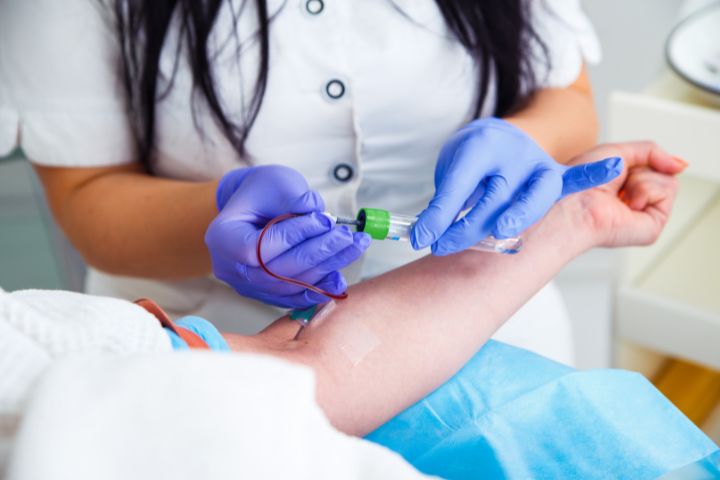Excitement About Northeast Medical Institute - New Haven Campus Phlebotomy Course & Cna Class
Excitement About Northeast Medical Institute - New Haven Campus Phlebotomy Course & Cna Class
Blog Article
Northeast Medical Institute - New Haven Campus Phlebotomy Course & Cna Class Things To Know Before You Buy
Table of ContentsThe Only Guide to Northeast Medical Institute - New Haven Campus Phlebotomy Course & Cna ClassHow Northeast Medical Institute - New Haven Campus Phlebotomy Course & Cna Class can Save You Time, Stress, and Money.What Does Northeast Medical Institute - New Haven Campus Phlebotomy Course & Cna Class Do?Not known Details About Northeast Medical Institute - New Haven Campus Phlebotomy Course & Cna Class The 20-Second Trick For Northeast Medical Institute - New Haven Campus Phlebotomy Course & Cna ClassThe Northeast Medical Institute - New Haven Campus Phlebotomy Course & Cna Class PDFs
Nevertheless, the use of such tools should be come with by other infection avoidance and control methods, and training in their use. Not all safety tools are relevant to phlebotomy. Prior to choosing a safety-engineered device, customers must completely examine available devices to establish their proper use, compatibility with existing phlebotomy practices, and efficiency in shielding personnel and clients (12, 33).For settings with reduced sources, cost is a motoring factor in procurement of safety-engineered gadgets. Where safety-engineered devices are not offered, skilled usage of a needle and syringe is appropriate.
labelling); transportation conditions; interpretation of results for medical administration. In an outpatient department or facility, supply a specialized phlebotomy work area containing: a tidy surface with two chairs (one for the phlebotomist and the other for the patient); a hand clean container with soap, running water and paper towels; alcohol hand rub. In the blood-sampling area for an outpatient department or clinic, provide a comfy reclining sofa with an arm remainder.
What Does Northeast Medical Institute - New Haven Campus Phlebotomy Course & Cna Class Mean?
Make sure that the signs for blood sampling are clearly specified, either in a written protocol or in documented guidelines (e.g. in a research laboratory form). Gather all the tools needed for the procedure and area it within safe and simple reach on a tray or cart, ensuring that all the items are plainly visible.
Introduce on your own to the person, and ask the patient to state their full name. Check that the laboratory form matches the patient's identity (i.e. match the person's information with the research laboratory kind, to ensure exact recognition).
Make the person comfy in a supine setting (preferably). Place a clean paper or towel under the person's arm. Review the examination to be executed (see Annex F) and get spoken authorization. The person has a right to refuse an examination at any moment before the blood sampling, so it is necessary to make certain that the patient has recognized the treatment.
A Biased View of Northeast Medical Institute - New Haven Campus Phlebotomy Course & Cna Class
Extend the person's arm and inspect the antecubital fossa or forearm. Locate a capillary of a good size that is visible, straight and clear.
DO NOT insert the needle where veins are diverting, view website due to the fact that this increases the chance of a haematoma. Locating the vein will help in identifying the appropriate dimension of needle.
Haemolysis, contamination and visibility of intravenous liquid and medicine can all modify the results (39. Nursing personnel and medical professionals might access central venous lines for specimens complying with protocols. Specimens from main lines carry a risk of contamination or wrong lab test outcomes. It is acceptable, yet not excellent, to attract blood samplings when very first presenting an in-dwelling venous device, before connecting the cannula to the intravenous liquids.
Northeast Medical Institute - New Haven Campus Phlebotomy Course & Cna Class Things To Know Before You Get This
Enable the area to dry. Failure to enable adequate contact time raises the danger of contamination. DO NOT touch the cleaned up site; in particular, DO NOT place a finger over the vein to direct the shaft of the subjected needle. It the site is touched, repeat the disinfection. Carry out venepuncture as follows.
Ask the patient to create a hand so the blood vessels are more prominent. Get in the blood vessel promptly at a 30 degree angle or less, and proceed to present the needle along the capillary at the most convenient angle of entrance - PCT Classes. As soon as adequate blood has been accumulated, release the tourniquet prior to taking out the needle
What Does Northeast Medical Institute - New Haven Campus Phlebotomy Course & Cna Class Mean?
Take out the needle gently and use mild pressure to the site with a tidy gauze or dry cotton-wool sphere. Ask the patient to hold the gauze or cotton wool in area, with the arm extended and increased. Ask the person NOT to bend the arm, since doing so causes a haematoma.

Getting The Northeast Medical Institute - New Haven Campus Phlebotomy Course & Cna Class To Work
Do not press the syringe plunger because extra pressure raises the threat of haemolysis. Where feasible, maintain televisions in a shelf and relocate the shelf towards you. Inject downwards into the suitable coloured stopper. DO NOT eliminate the stopper since it will release the vacuum. If the example tube does not have a rubber stopper, infuse exceptionally gradually right into the tube as reducing the stress and rate made use of to transfer the specimen reduces the threat of haemolysis.
Report this page